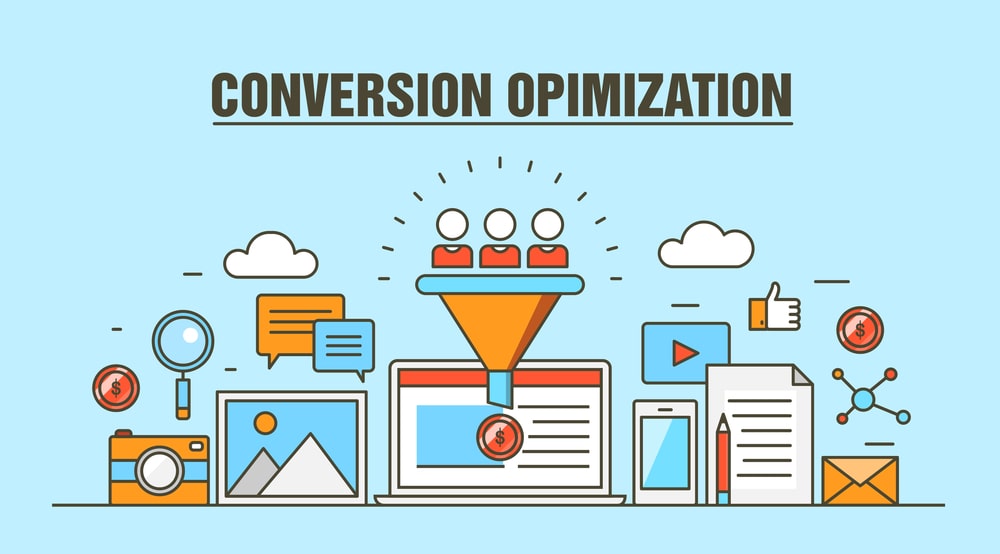Every forward-thinking business owner aims at a high-converting theme for their store. At SCG Team, we have the expertise and experience to engineer your company’s growth with the right ERP solution. In this blog post, we’ll guide you through choosing the right SuiteCommerce theme, designing an engaging storefront, implementing conversion optimization strategies, optimizing performance and speed, and testing and analytics. Trust our NetSuite veteran team to help create a powerful online presence that drives conversions.
Choosing the Right SuiteCommerce Theme
When choosing the right SuiteCommerce theme for your store, it’s important to consider user experience and mobile responsiveness. By optimizing your theme for accessibility and automating certain processes, you can ensure a beautiful and seamless shopping experience that converts visitors into customers. Following best practices in theme selection will help drive engagement and maximize sales potential.
To build a high-converting SuiteCommerce theme for your store, it is crucial to understand your target audience. Considering their needs and preferences, you can create a visually appealing, user-friendly design that enhances the shopping experience. Additionally, optimizing your theme for mobile responsiveness is essential in today’s digital landscape, where more people are using smartphones and tablets to browse websites. This ensures that no matter what device your customers use, they can easily navigate your online store.
Understanding Your Target Audience
Conducting market research is crucial for understanding your target audience. By gathering data on consumer preferences, buying habits, and trends in your industry, you can uncover valuable insights that will inform your marketing strategies and product development efforts.
Understanding Your Target Audience: By conducting market research and creating buyer personas, you can uncover valuable insights that inform your marketing strategies and product development efforts. Analyzing customer behavior allows you to improve user experience and offer personalized experiences based on individual patterns.
Creating buyer personas helps you visualize and understand your target audience’s segments. These fictional representations of your ideal customers provide a deeper understanding of their needs, motivations, pain points, and behaviors. Use these personas to guide your messaging and offerings to meet their specific needs best.
Analyzing customer behavior lets you track how people interact with your website or store. By monitoring metrics such as page views, conversion rates, bounce rates, and click-through rates, you can identify areas for improvement in user experience and accessibility. Use this information to automate personalized experiences for each visitor based on their behavior patterns.
Considering User Experience
Designing intuitive navigation is crucial for providing a seamless user experience. By organizing your website logically and easily, users can effortlessly find what they want, increasing their satisfaction and engagement. Optimizing page load speed also ensures users aren’t left waiting and frustrated. Clear call-to-action enhances the user experience by guiding visitors towards desired actions on your website. These best practices not only improve accessibility but also automate the process of navigating through your site, creating a visually appealing and efficient browsing experience.
Optimizing for Mobile Responsiveness
Using responsive design principles is essential for optimizing mobile responsiveness. By designing your website to adapt to different screen sizes and devices, you ensure that users have a seamless browsing experience no matter how they access your site. Testing across various devices and screen sizes is crucial to identify potential issues and make necessary adjustments for optimal accessibility. Implementing a mobile-friendly checkout process streamlines the purchasing journey, making it easier for customers to complete their transactions and increasing conversion rates. Consider these best practices when building a high-converting SuiteCommerce theme for your store.
Designing an Engaging Storefront

Creating a Memorable Brand Identity is crucial for designing an engaging storefront. Your brand should have a unique personality that resonates with your target audience and sets you apart from competitors. Incorporate your brand values, mission, and visual elements throughout your website to establish a strong identity that customers will remember.
Utilizing High-Quality Visuals is essential in capturing visitors’ attention and keeping them engaged on your storefront. Invest in professional product photography, use visually appealing graphics, and choose eye-catching colors to enhance the overall aesthetic of your website. High-quality visuals make your products more attractive and contribute to building trust and credibility with potential customers.
Implementing Clear and Intuitive Navigation ensures visitors can easily find what they want on your storefront. Use clear headings, categories, and subcategories to logically organize your products or services. Implement intuitive navigation features such as search bars, filters, and breadcrumbs to help users quickly navigate different pages without getting lost or confused.
Building a high-converting SuiteCommerce theme requires careful consideration of these three key aspects: creating a memorable brand identity, utilizing high-quality visuals, and implementing clear, intuitive navigation. These elements synergize to captivate your attention and drive conversions on your online storefront.
Creating a Memorable Brand Identity
Choosing the right color palette is essential in creating a memorable brand identity. Colors evoke emotions and can help communicate your brand’s personality to your audience. Craft a unique logo design that is simple yet distinctive, representing your brand’s values and mission. A well-designed logo can make a lasting impression on customers. Developing consistent brand messaging across all platforms ensures your audience receives a cohesive message about who you are as a company.
- Choose colors that align with your brand personality
- Use complementary colors to create visual harmony
- Research color psychology to understand how different colors affect emotions
- Create an original logo design that stands out from competitors
- Incorporate elements of simplicity and memorability into the logo
- Develop clear and concise messages for marketing materials
- Keep a consistent tone, voice, and style in all communications
Utilizing High-Quality Visuals
Showcasing compelling product images is essential for building a high-converting SuiteCommerce theme. High-quality visuals that accurately represent your products will captivate potential customers and increase their desire to purchase. Incorporating engaging videos or animations can also be highly effective in grabbing attention and providing an interactive experience for users. In addition, using eye-catching graphics and icons throughout your website will enhance the visual appeal and help guide visitors toward important information or actions, ultimately improving conversion rates.
Implementing Clear and Intuitive Navigation
Designing a user-friendly menu structure is essential for implementing clear and intuitive navigation. By organizing the menu logically and easily, users can quickly find what they’re looking for on your website. Additionally, including prominent search functionality allows users to perform specific searches and easily access relevant content. Lastly, adding breadcrumb navigation provides an additional convenience layer, allowing users to track their browsing history and easily navigate to previous pages. These features enhance the overall user experience, making it more seamless and efficient for visitors to explore your site.
Implementing Conversion Optimization Strategies

Streamlining the Checkout Process
Simplified navigation and user-friendly design: Our high-converting SuiteCommerce theme focuses on simplifying the checkout process by providing intuitive navigation and a user-friendly design. Customers can easily find what they’re looking for, reducing frustration and improving their shopping experience.
Guest checkout option to reduce friction: We understand that not all customers want to create an account before purchasing. That’s why our theme includes a guest checkout option, allowing customers to complete their transactions quickly without having to go through the hassle of creating an account.
One-page checkout for quick and seamless transactions: Our high-converting SuiteCommerce theme offers a one-page checkout feature that streamlines the entire purchasing process into a single page. This eliminates unnecessary steps and reduces friction, enabling customers to complete their transactions quickly and seamlessly.
- Simplified navigation
- User-friendly design
- Guest checkout option
- One-page checkout
Using Effective Calls-to-Action
Clear and compelling CTAs that stand out are essential for driving conversions on your website. Make sure your calls-to-action use strong, action-oriented language and are easily visible to visitors. Strategic placement of CTAs throughout the site is crucial to guide users toward desired actions. Consider placing them prominently above the fold, within content sections, and at the end of important pages. A/B testing different CTA designs and messaging allows you to optimize their effectiveness over time.
- Use strong, action-oriented language.
- Ensure clear visibility of CTAs
- Place CTAs strategically throughout the site
- Test different designs and messaging
Leveraging Personalization and Recommendations
Dynamic product recommendations based on browsing history can greatly enhance the customer experience by providing personalized suggestions tailored to their interests and preferences. The system can generate targeted recommendations that increase the likelihood of conversion by analyzing a customer’s past interactions with the website, such as viewed products or previous purchases.
Personalized content based on customer segments or preferences allows for a more tailored shopping experience. Businesses can deliver content that resonates with each group by segmenting customers into different groups based on factors like demographics, purchase history, or browsing behavior. This personalization not only increases engagement but also improves customer loyalty and satisfaction.
The “Customers who bought this also bought” feature effectively encourages upselling and cross-selling. Businesses can inspire additional sales and increase average order value by suggesting related products based on what other customers have purchased alongside a particular item. This feature taps into social proof and helps customers discover complementary items they may not have considered otherwise.
By leveraging personalization and recommendations in your SuiteCommerce theme, you can create a highly customized shopping experience that maximizes conversions and boosts revenue for your store.
Optimizing Performance and Speed

Minimizing Page Load Time
- Optimize code and remove unnecessary scripts
- Leverage browser caching for faster load times
- Prioritize above-the-fold content to improve initial rendering.
Optimizing the code and eliminating unnecessary scripts that may slow the loading process is crucial to minimizing page load time. Additionally, leveraging browser caching can significantly improve load times by storing copies of frequently accessed resources locally on the user’s device. Lastly, prioritizing above-the-fold content ensures that the most important elements are loaded first, allowing users to see and interact with key information. At the same time, the rest of the page loads in the background. Implementing these strategies can enhance user experience and ensure faster page loads for your website visitors.
Optimizing Image and File Sizes
Compressing images without sacrificing quality is crucial for optimizing file sizes. By using advanced compression algorithms, you can significantly reduce the size of your images while maintaining their visual integrity. Additionally, minifying CSS and JavaScript files ensures quicker downloads by removing unnecessary whitespace and comments. Another effective technique is using lazy loading to defer the loading of non-essential elements, improving page load times and providing a smoother user experience.
Implementing Caching and Compression
Enabling server-side caching through HTTP headers or plugins can significantly improve website performance by storing frequently accessed resources locally, reducing the need for repeated requests to the server. Utilizing gzip compression effectively reduces file sizes during transfer, resulting in faster load times and improved user experience. Implementing content delivery networks (CDNs) ensures faster global access to your website’s content by distributing it across multiple servers worldwide, reducing latency and improving overall performance.
Testing and Analytics
Conducting A/B Testing is crucial for optimizing your SuiteCommerce theme. By testing different variations of your design, layout, and content, you can identify what resonates best with your audience and drives higher conversions. Use tools like Google Optimize or Optimizely to run experiments and gather valuable data on user preferences.
Monitoring and Analyzing User Behavior lets you gain insights into how visitors interact with your website. Utilize analytics platforms like Google Analytics or Adobe Analytics to track important metrics such as bounce rate, time on page, and conversion rate. This data will help you understand user behavior patterns and make informed decisions about improving the user experience.
Making Data-Driven Decisions is key to building a high-converting SuiteCommerce theme. Instead of relying solely on intuition or guesswork, leverage the power of data to drive your decision-making process. Analyze the results from A/B tests and user behavior data to identify areas for improvement and implement changes that will positively impact conversion rates.
Conducting A/B Testing

Choosing the right elements to test is crucial for conducting effective A/B testing. You can gather valuable data on what resonates best with your audience by identifying key components of your website or marketing campaign, such as headlines, call-to-action buttons, or color schemes.
Setting up a controlled experiment is essential to ensure accurate results in A/B testing. This involves dividing your audience into two groups and presenting each with a different version of the tested element. By keeping all other variables constant and randomly assigning participants to each group, you can isolate the impact of the tested element.
Analyzing and interpreting test results requires thoroughly examining quantitative and qualitative data. Look at metrics like click-through or conversion rates to determine which variation performed better. Additionally, consider gathering user feedback through surveys or interviews to gain insights into their preferences and experiences.
Remember that conducting A/B testing is an iterative process that allows you to continually optimize your approach based on real-time data and user feedback. With a careful selection of elements, controlled experiments setup, and comprehensive analysis techniques, you can make informed decisions that maximize conversions and drive growth for your business.
Monitoring and Analyzing User Behavior
Implementing tracking tools like Google Analytics allows you to gather valuable data on user behavior. By examining user flow and drop-off points, you can identify areas where users are leaving your site and take steps to improve these sections. This data-driven approach allows you to make informed decisions based on user behavior and optimize your website for better conversions.
Making Data-Driven Decisions
Collecting relevant data from multiple sources is crucial in making data-driven decisions for optimizing your SuiteCommerce theme. You can gain a comprehensive understanding of user behavior and preferences by gathering information from various channels, such as website analytics, customer feedback, and market research.
Data analysis tools are essential to uncover valuable insights that inform decision-making. These tools allow you to dive deep into the collected data, identify patterns and trends, and extract meaningful information to improve your theme’s performance.
Using the obtained data insights effectively enables you to optimize your SuiteCommerce theme for higher conversions. By leveraging this knowledge, you can adjust layout design, product placement, navigation structure, and call-to-action buttons. This optimization process enhances the user experience and increases the likelihood of converting visitors into customers. For more, contact us today at hello@seibertconsulting.com or 760-205-5440 to get started!




